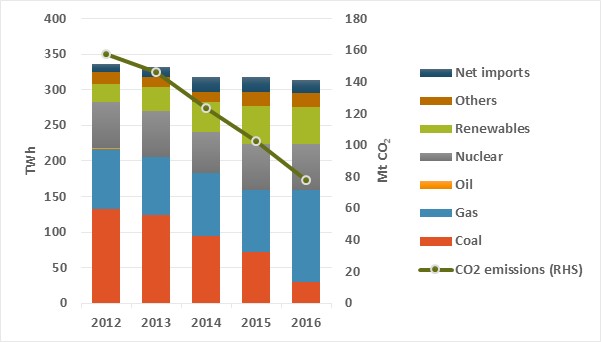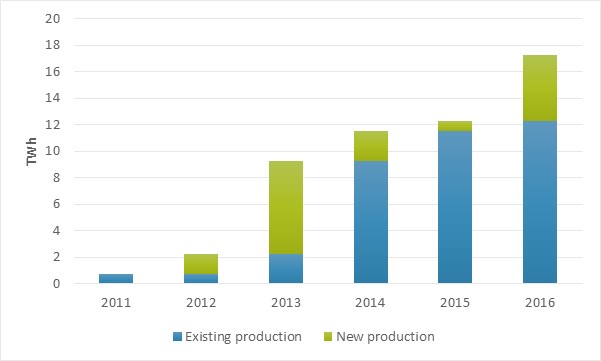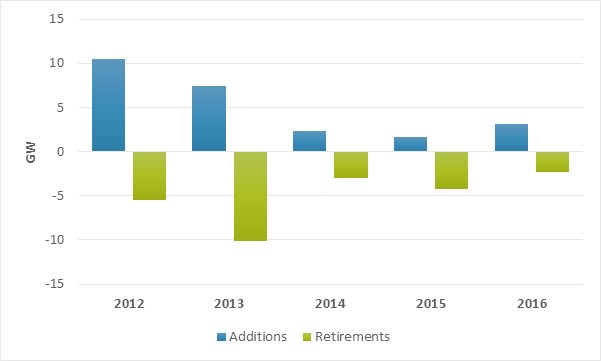The EU gas and energy sector is in the midst of a profound transformation driven by decarbonisation, digitalisation and decentralisation. The latest report by Cedigaz analyses in ten key points the evolution of the gas sector and includes forward looking views on new trends in EU gas markets.
| 6. Role of gas in the energy transition in the medium term: Natural gas is expected to be a key pillar of the EU energy transition. As the cleanest of all fossil fuels, it allows a quick reduction of the power sector’s emissions thanks to coal-to-gas switching. Moreover, thanks to its flexibility, natural gas is an ideal partner to renewables. Gas-fired power plants are well suited to follow rapid swings in power supply of variable renewables. In the transport sector, the cleanliness of natural gas is a key advantage for improving air quality, a major health and economic issue. In maritime transport, new regulations to reduce sulphur emissions from shipping play a key role in the development of LNG as a marine fuel. Natural gas, if it cannot decarbonise the heating sector, can make an effective contribution to reducing emissions from the sector and, in the long term, can be replaced by renewable gas. UK power supply & CO2 emissions from power plants
|
| 7. Renewable gas: Renewable gas is set to play a greater role than before in the EU’s energy transition. Renewable gas is a way for Europe to decarbonise energy end-user sectors and utilise surplus renewable energy. Biogas is today the most developed form of renewable gas in the EU with 18,000 biogas plants. Another sector that is taking off is the upgrading of biogas to produce biomethane for injection into the natural gas grid (more than 500 plants today). Additionally, as the issue of curtailment of surplus electricity persists, the concept of power-to-gas is also gaining traction. The EU has 70 operating and planned power-to-gas projects. In all these sectors and associated technologies, Europe is positioning itself as a world leader. Evolution of biomethane production in Europe
|
| 8. Outlook for gas demand: The outlook for natural gas demand is contrasted between the medium and long term. In the medium term, in all scenarios, EU natural gas is expected to remain stable until 2025 compared to 2016. The decline in gas demand from the building and industrial sectors is offset by an increase in gas demand by the power sector, due to coal-to-gas switching. In the longer term (after 2025), the scenarios diverge substantially. In the central scenario of the International Energy Agency, natural gas demand remains stable until 2035, before falling slightly. In the Sustainable Energy Development scenario, natural gas demand drops after 2025 due to a sharp decline of demand by the power sector. The uncertainty over long-term demand is a key challenge for EU’s external suppliers, but also for European players. As most projections do not include green gas (not only biogas/biomethane, but also power-to-gas and hydrogen) into the outlooks for gas demand, they do not give an accurate view of the EU gas system of the future. According to Eurogas, in an Innovative Gas Scenario, EU gas demand in 2050 would be almost the same as today, but innovative gas solutions could represent 76% of this consumption. This scenario also shows that the cost of massive renewables integration is lower by tapping at an early stage the vast potential that gas (natural and renewable) offers. |

| 9. Security of supply: EU regional security of supply is being enhanced due to a new regulation on security of gas supply, investments in new gas infrastructure, increased competition on the European market and the abundance of global gas supply. However, European players are faced with new challenges. The nature of security of supply is evolving and is more and more focussed on gas assets, necessary for ensuring security of gas supply (and that of electricity supply), but hardly used. However, investment in key assets (e.g. gas-fired power plants, storage facilities) is at a standstill. The current market design does not allow to recover their costs. This loss of profitability has led to the mothballing and closure of several gas-fired power plants and storage sites. In the transmission segment, changes in the geography of production and consumption are restructuring the gas flows in Europe. Some infrastructures favouring the integration of markets and/or security of supply will only be used sporadically, in exceptional supply situations. A key challenge will be to provide sufficient remuneration to the network owners to keep the infrastructure in place. Gas-fired power capacity in the EU: new capacity and retirements since 2012
|
| 10. Shifting strategies of major European energy utilities: The largest European integrated utilities have been hit heavily by the sector mutation, but most of them have now adapted to changes by shifting strategies and embracing the energy transition. They are engaged in a profound mutation to lessen their exposure to merchant power (and in some cases upstream gas activities), increase investments in renewables and regulated networks, and accelerate growth in energy supply and services (customer solutions). These strategies aim to lower risks of business portfolios, but also to reposition the companies into a sustainable growth path. The new focus reflects three fundamental market developments and corresponding growth businesses: the global trend toward renewables, the evolution of energy networks into a platform for distributed-energy solutions, and customers’ changing needs. The European utility landscape is being reshaped by the structural mutation in the energy world. |
Sylvie Cornot-Gandolphe : “Ten major trends in the European gas market“, Cedigaz Insights n° 25 February 2018, 46 pages, PDF Format.
For more information: contact@cedigaz.org
Our website: https://www.cedigaz.org/
Cedigaz (International Center for Natural Gas Information) is an international association with around 80 members worldwide, created in 1961 by a group of international gas companies and the Institut Français du Pétrole Energies nouvelles (IFPEN). Dedicated to natural gas information, CEDIGAZ collects and analyses worldwide economic information on natural gas and LNG in an exhaustive and critical way.



